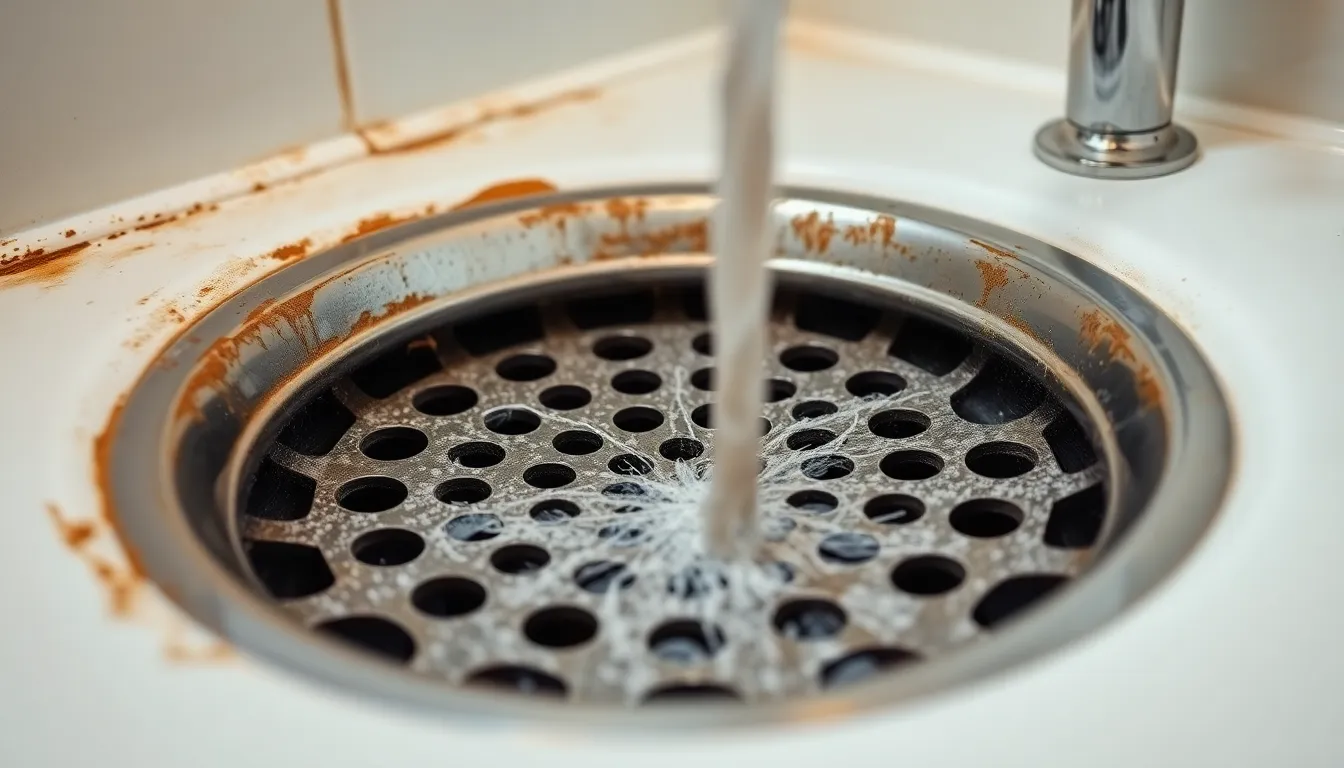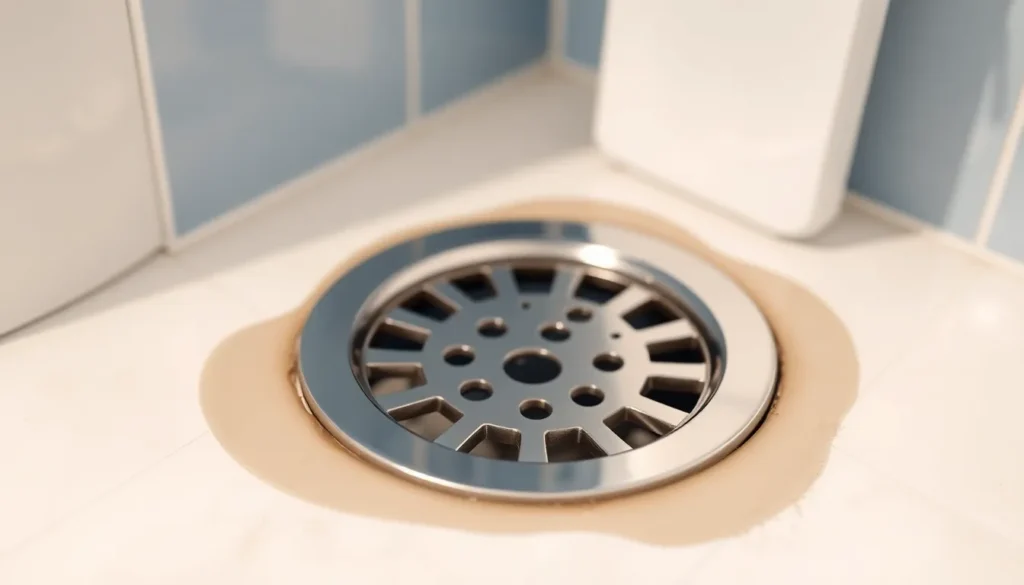Table of Contents
ToggleEver stepped into the shower only to be greeted by a whiff that could knock a skunk off its feet? It’s a common dilemma: the shower drain smells foul, yet it’s not clogged. What gives? While the shower may seem innocent, lurking beneath the surface are odors that can turn an invigorating wash into a nose-wrinkling experience.
Common Causes of Shower Drain Odors
Foul odors can arise from several sources in a shower drain, even without visible clogs. Understanding these causes helps address persistent smells effectively.
Bacteria Buildup
Bacteria thrive in warm, moist environments often found in shower drains. Shower gel, soap scum, and organic matter serve as food sources, promoting bacterial growth. Accumulation of these substances creates a breeding ground for unpleasant odors. Pathogenic bacteria can also develop, contributing to even stronger smells. Regular cleaning of the drain prevents excessive bacteria buildup and mitigates odor issues.
Trapped Debris
Hair, soap remnants, and other debris frequently accumulate in shower drains. This trapped material doesn’t always block water flow but can decay over time, leading to odor production. Decomposing organic matter releases foul smells that linger. Removing debris through regular maintenance keeps drains clear and odor-free. Utilizing a drain cover can help reduce the amount of debris that enters the drain, further minimizing odor risks.
How to Identify the Problem

Identifying the source of unpleasant smells from a shower drain requires attention to various indicators. Understanding these signs can lead to effective solutions.
Smell Characteristics
Foul odors vary in nature and intensity. A musty smell indicates the presence of mold or mildew, common in moist environments. A rotten egg odor often signals the presence of sulfur, which may result from bacteria growth in the drain. If the smell resembles decaying organic matter, trapped debris could be the culprit. Identifying these characteristics helps narrow down the potential issues causing the unwanted aroma.
Visual Inspection
Conducting a thorough visual inspection reveals clues about drain odors. Look for signs of grime or buildup around the drain cover. Dark spots indicate mold growth or mildew accumulation. Hair and soap residue often clogs the entrance, trapping odors. Inspect the drain’s interior as well, if possible. A build-up of debris can emit strong smells as it decays, leading to unpleasant experiences during showers. Regular checks keep drains fresher and free of surprises.
Solutions to Eliminate Odor
Addressing unpleasant shower drain smells involves effective cleaning methods and preventive measures. These solutions help maintain a fresh and hygienic environment.
Cleaning Methods
Using a mixture of baking soda and vinegar effectively neutralizes odors. Pour one cup of baking soda followed by one cup of vinegar down the drain. Allow the mixture to fizz for 30 minutes before rinsing with hot water. A bleach solution can also serve as a powerful cleaner, mixing one part bleach with ten parts water. This solution helps eliminate bacteria and mildew, reducing unpleasant smells. Regularly cleaning the drain with a long brush or a plumber’s snake dislodges buildup, ensuring optimal drainage and odor control.
Preventive Measures
Preventive strategies play a crucial role in avoiding future smells. Installing a drain cover stops hair and debris from accumulating in the drain. Regularly flushing the drain with hot water keeps grease and soap scum from building up. Scheduling routine cleanings every few months ensures continued odor prevention. Furthermore, ensuring adequate ventilation in the bathroom helps reduce moisture, thus minimizing bacterial growth. Being proactive enhances a pleasant shower experience.
When to Call a Professional
Sometimes, lingering odors signal more serious plumbing problems. Recognizing these signs can help prevent further complications.
Signs of Serious Issues
Unusual smells from a shower drain may suggest significant issues. If the odor persists despite cleaning efforts, it’s wise to investigate further. A musty scent indicates potential mold or mildew growth within pipes. Sulfur-like smells often signal a more severe bacterial presence. A smell that resembles organic decay points towards trapped debris. Water pooling around the shower area might indicate drainage issues. Homeowners should also pay attention to recurring drain problems, even if they’re not visibly clogged. If odors and clogs become frequent, contacting a professional becomes crucial.
Cost Considerations
Cost factors can determine whether homeowners engage a plumbing service. Basic inspections typically start around $50 to $100, with cleaning services ranging from $100 to $300. More extensive repairs may result in higher expenses, especially if pipe replacement becomes necessary. Homeowners should evaluate the severity of the issue before proceeding. Understanding the potential need for repairs can help set budget expectations. Prioritizing quick action might save money, as delayed issues often lead to expensive solutions. Always obtain multiple quotes to assess pricing and services effectively.
Addressing shower drain smells is essential for maintaining a pleasant bathing experience. Understanding the causes of these odors can help homeowners take effective action. Regular cleaning and maintenance play a crucial role in preventing bacteria buildup and debris accumulation.
Implementing simple solutions like using baking soda and vinegar can neutralize unpleasant scents. Homeowners should remain vigilant about any persistent odors that may indicate deeper plumbing issues. Taking proactive steps not only ensures a fresh shower environment but also contributes to the overall hygiene of the bathroom. By staying informed and proactive, individuals can enjoy a clean and odor-free shower experience.







